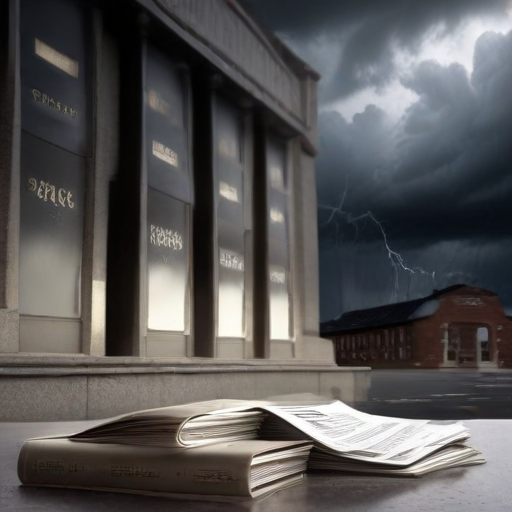As interest rates hover at their highest levels in over two decades and inflation continues to affect consumers, major banks are gearing up for potential risks linked to their lending practices. In the second quarter, JPMorgan Chase, Bank of America, Citigroup, and Wells Fargo all reported an increase in their provisions for credit losses, indicating a cautious approach as they anticipate more challenging financial conditions ahead.
JPMorgan set aside $3.05 billion for credit losses, while Bank of America allocated $1.5 billion. Citi’s allowance surged to $21.8 billion by the quarter’s end, tripling its reserves, and Wells Fargo earmarked $1.24 billion. These provisions serve as a buffer against potential loan defaults and delinquencies, especially in sectors like commercial real estate and unsecured lending.
A recent study from the New York Fed revealed that total household debt in the U.S. has reached an astonishing $17.7 trillion, encompassing consumer loans, student loans, and mortgages. This growing debt is of particular concern as credit card use spikes, with outstanding balances surpassing $1 trillion for the second consecutive quarter. Experts attribute the rising credit reliance to the depletion of pandemic-era savings.
Banking authorities are increasingly concerned, particularly about consumers in lower income brackets, who are feeling the financial pinch more acutely. While data shows an overall resilient U.S. consumer, there is a notable divide in financial health among different income levels. As reported by Citi CFO Mark Mason, only the wealthiest segment has managed to retain pre-pandemic savings, while those with lower credit scores are stretching their budgets thinner.
The Federal Reserve’s decision to maintain interest rates at 5.25-5.5% reflects its cautious stance as it awaits inflation to moderate towards the target of 2%. As banks brace for potential defaults in the coming months, there’s still no clear indication of a consumer crisis, as recent earnings show consistent revenues and a stable banking sector poised to withstand pressures.
Experts like Brian Mulberry maintain an optimistic view, stating that while challenges exist, they do not yet indicate systemic failure within the banking structure. The financial system, at this juncture, exhibits robustness, with a willingness to adapt to the evolving economic landscape.
In summary, while banks are preparing for increased credit losses due to rising interest rates and inflation, they continue to report strong earnings that signify resilience within the financial sector. This adaptability highlights the potential for recovery as consumers and banks alike navigate these uncertain economic conditions. Ultimately, proactive measures taken by banks reflect a crucial understanding of the marketplace and an effort to mitigate risks while fostering a more stable environment for lending.
